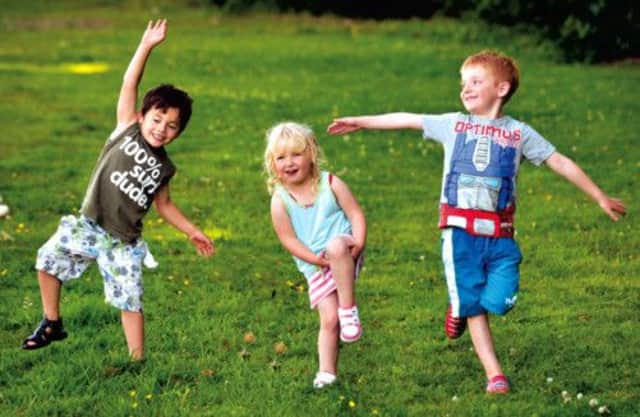‘Physical literacy’ programme for Scottish schools


Children from primary age upwards will take part in the new programme – to be introduced at the beginning of next term – which will develop rhythm, balance and movement before concentrating on specific skills in sports such as football, tennis or volleyball.
The Better Movers and Thinkers initiative is based on a training model used by Olympians and football stars to train their minds and bodies for performance.
Advertisement
Hide AdAdvertisement
Hide AdNow after a successful pilot scheme, every local authority in Scotland will adopt the new “physical literacy” programme. It will be rolled out across the country before February 2015 as part of a Commonwealth Games “legacy” goal of ensuring that all children are given at least two hours of PE time per week.
The method is already widely used in schools in Canada and Australia with focus being placed on first developing the attributes needed to excel in sport – good movement, problem-solving skills, timing, co-ordination and rhythm – rather than techniques directly used in individual sports.
Participation in the scheme is also believed to improve overall school performance as pupils become more active and fit.
Education Scotland chiefs said the results from the pilot in North Lanarkshire went beyond their expectations, with researchers recording a “significant difference in behaviour and attendance” at school and that “performance was improved no end”. Girls in particular found the new techniques to be beneficial.
The Better Movers and Thinkers model has been developed by former teachers Thomas Dowens and John French, together with Andy Dalziell, a PhD research student at Edinburgh University.
Dowens, who is on secondment from his role as director of coaching at the Scottish Volleyball Association, believes that many pupils have been put off sport because some sports require skills that are too demanding for their age and stage of development.
“For years PE has sat at the side of learning,” he said. “We want to demonstrate this does not have to be the case.
“The government programme will look at how physical education should be taught – it’s a form of physical literacy which can link to recognition and problem-solving skills. Children don’t learn how to kick a football or hit a volleyball until they’ve learned how to move and how to control that movement.”
Advertisement
Hide AdAdvertisement
Hide AdDowens added: “You start with this programme and you keep reinforcing it, concentrating on how to move properly, how to solve problems and take in information. Most people agree that children should not be specialising in a particular sport until Primary 6-7.”
French, now a development officer for the national scheme, said it is intended to “raise the bar” in the quality of the learning experience.
“We want children to understand why PE and sport is important and produces positive impacts on day-to-day lives,” he said. “Put very simply, this process is similar to the expression ‘you have to walk before you can run’. We are teaching children balance, rhythm, timing and movement.
“In simple terms, we are giving the child an understanding of how all these things combined result in sport of varying kinds. This connects with learning in the classroom and is where the ‘education’ part of physical education comes to the fore.”
Professor Nanette Mutrie, chair of physical health at Edinburgh University, said the critical issue was introducing PE-related activities into primary schools. “In primary school we are missing the moment in time that children are able to learn these basic but crucial skills.
“The main goal here is to provide a new approach to physical education, which we hope will result in both and better physical activity, in terms of confidence to towards sports, and the development of better cognitive skills leading to higher performance in the classroom.”
The Scottish Government has backed the project as part of a health and wellbeing initiative that involves increasing the amount of time schoolchildren take part in PE. A decade ago just five per cent of primary school pupils in Scotland were receiving two hours of PE and although that has improved – up to 55 per cent in 2010 – the goal remains distant.